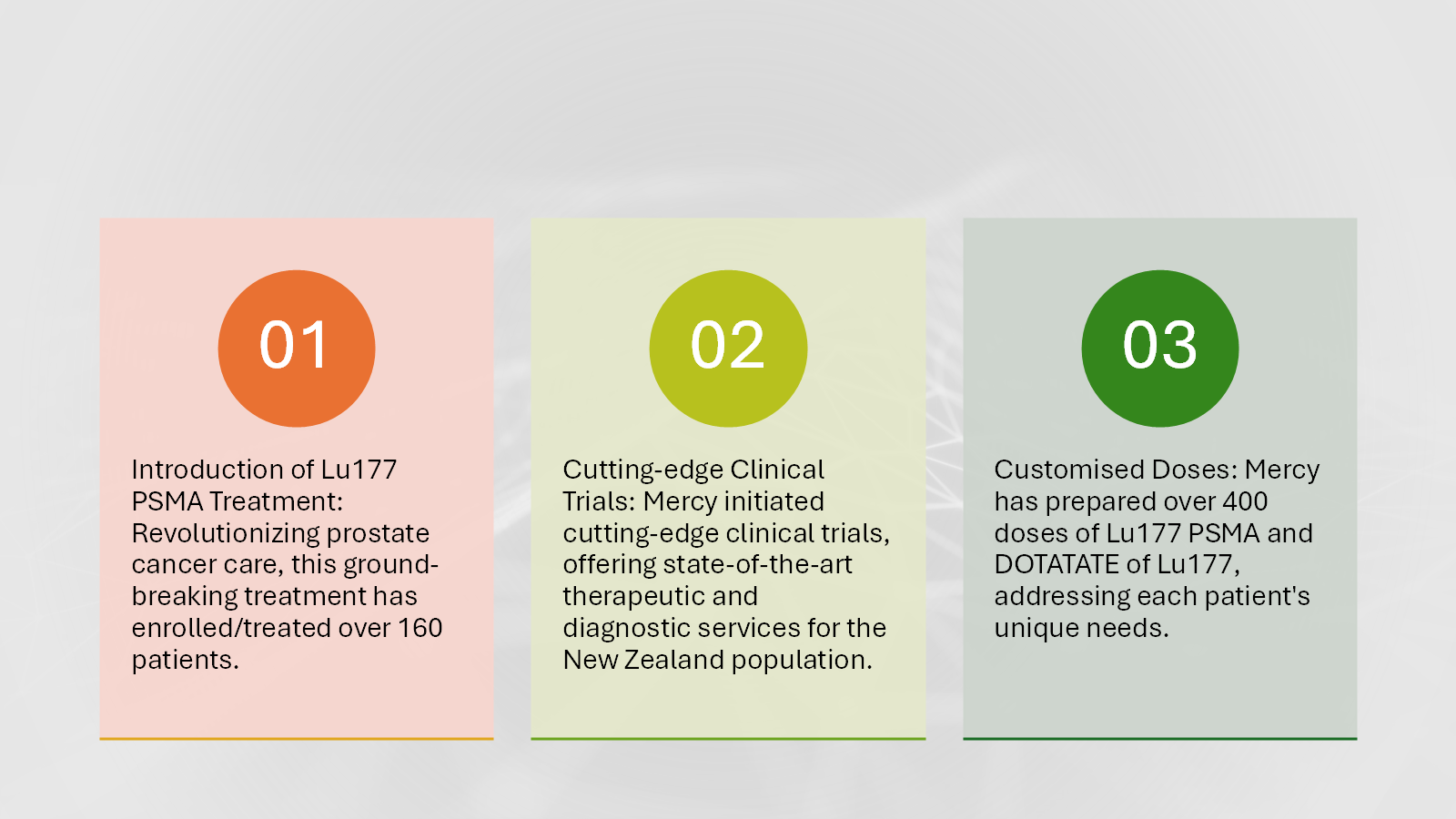A Significant Milestone for Mercy Molecular Imaging and Theranostics!
Mercy Radiology in New Zealand celebrated six years of leading Theranostic treatments in August 2024. Innovation, expanded services, and outstanding patient outcomes have defined our journey. Thanks to the dedication of our exceptional team and ongoing research efforts, we’ve introduced cutting-edge therapies and further advanced our Theranostic capabilities.
We look forward to another year of transformative treatments and unparalleled patient care.
Key Advancements

Are you interested in learning more about Theranostics and how it could support your treatment? Please ask your specialist or oncologist for a referral.
Mercy Radiology has been at the forefront of advancing Theranostics in New Zealand for over six years, proudly standing as one of the few providers in Aotearoa.
Mercy Radiology's Theranostics and Research team offer Nuclear Medicine therapy, including Lu-177 PSMA therapy for prostate cancer and Lu-177 DOTATATE for neuroendocrine tumours.
The Mercy Theranostics team has experience in the experimental and compassionate use of radiopharmaceuticals for therapy, and they initiate and participate in local and international clinical trials.
We can offer consultations to patients with appropriate referrals from specialists or oncologists to discuss oncological and non-oncological nuclear medicine therapy options.